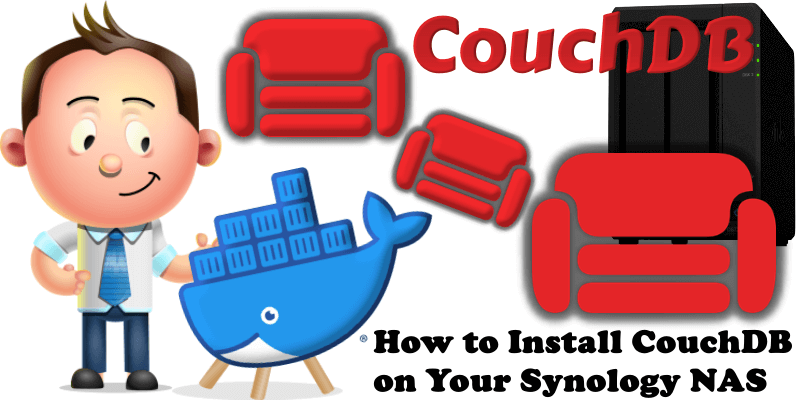
Apache CouchDB is an open-source document-oriented NoSQL database, implemented in Erlang. CouchDB uses multiple formats and protocols to store, transfer, and process its data. It uses JSON to store data, JavaScript as its query language using MapReduce, and HTTP for an API. The Couch Replication Protocol is implemented in a variety of projects and products that span every imaginable computing environment from globally distributed server-clusters, over mobile phones to web browsers. Store your data safely, on your own servers, or with any leading cloud provider. Your web and native applications love CouchDB, because it speaks JSON natively and supports binary data for all your data storage needs. In this step by step guide I will show you how to install CouchDB on your Synology NAS with Docker & Portainer.
STEP 1
Please Support My work by Making a Donation.
STEP 2
Install Portainer using my step by step guide. If you already have Portainer installed on your Synology NAS, skip this STEP. Attention: Make sure you have installed the latest Portainer version.
STEP 3
Go to File Station and open the docker folder. Inside the docker folder, create one new folder and name it couchdb. Follow the instructions in the image below.
Note: Be careful to enter only lowercase, not uppercase letters.
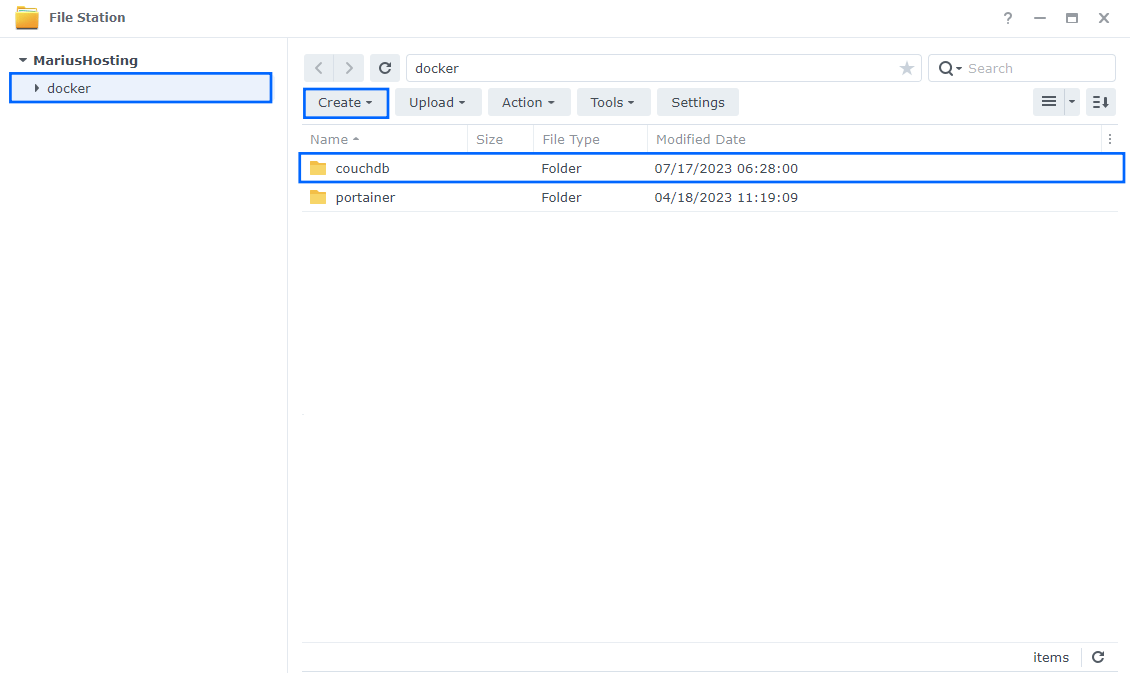
STEP 4
Log into Portainer using your username and password. On the left sidebar in Portainer, click on Home then Live connect. Follow the instructions in the image below.

On the left sidebar in Portainer, click on Stacks then + Add stack. Follow the instructions in the image below.

STEP 5
In the Name field type in couchdb. Follow the instructions in the image below.
version: "3.9"
services:
couchdb:
image: couchdb
container_name: CouchDB
hostname: couchdb
mem_limit: 2g
network_mode: host
volumes:
- /volume1/docker/couchdb:/opt/couchdb/data:rw
environment:
COUCHDB_USER: marius
COUCHDB_PASSWORD: mariushosting
restart: on-failure:5
Note: Before you paste the code above in the Web editor area below, change the value for COUCHDB_USER and type in your own username. marius is an example for an username.
Note: Before you paste the code above in the Web editor area below, change the value for COUCHDB_PASSWORD and type in your own password. mariushosting is an example for a password.
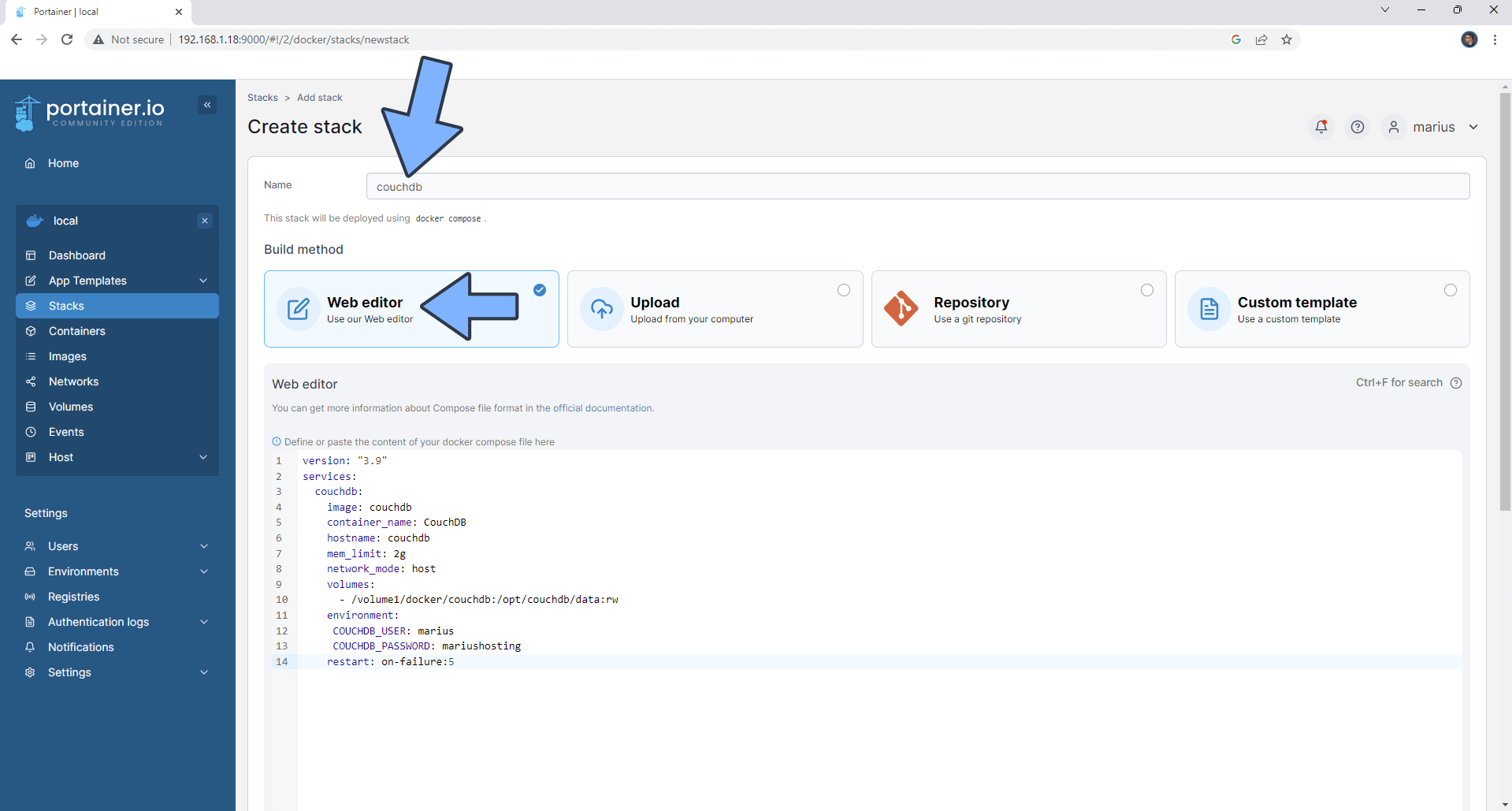
STEP 6
Scroll down the page until you see a button called Deploy the stack. Click on it. Follow the instructions in the image below. The installation process can take up to a few minutes. It will depend on your Internet speed connection.
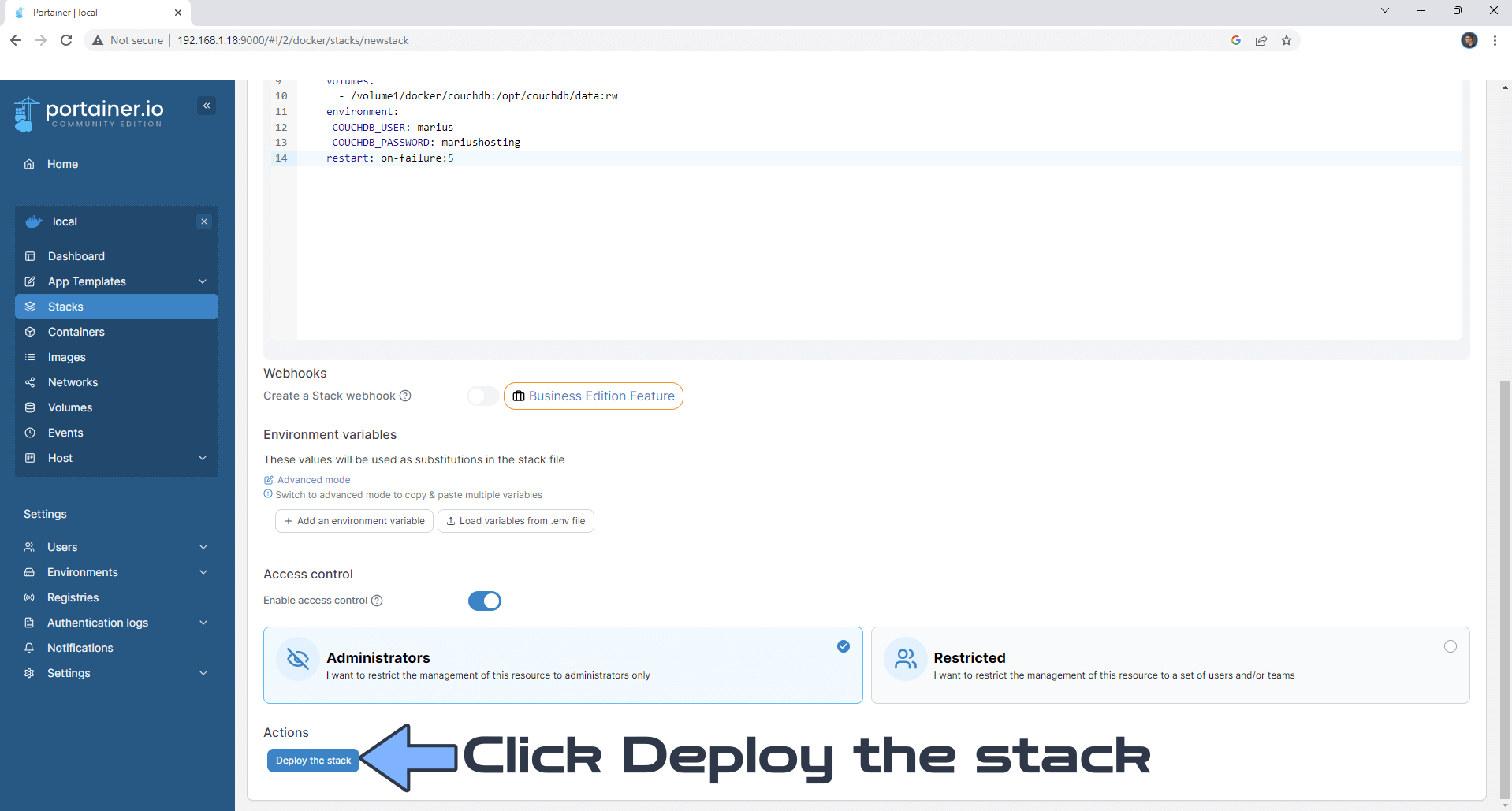
STEP 7
If everything goes right, you will see this message at the top right of your screen: “Success Stack successfully deployed“.

STEP 8
🟢Please Support My work by Making a Donation. Almost 99,9% of the people that install something using my guides forget to support my work, or just ignore STEP 1. I’ve been very honest about this aspect of my work since the beginning: I don’t run any ADS, I don’t require subscriptions, paid or otherwise, I don’t collect IPs, emails, and I don’t have any referral links from Amazon or other merchants. I also don’t have any POP-UPs or COOKIES. I have repeatedly been told over the years how much I have contributed to the community. It’s something I love doing and have been honest about my passion since the beginning. But I also Need The Community to Support me Back to be able to continue doing this work.
STEP 9
The installation process can take up to a few seconds/minutes. It will depend on your Internet speed connection. Now open your browser and type in http://Synology-ip-address:5984/_utils Type in your own Username and Password that you have previously created at STEP 5. Click Log in. Follow the instructions in the image below.
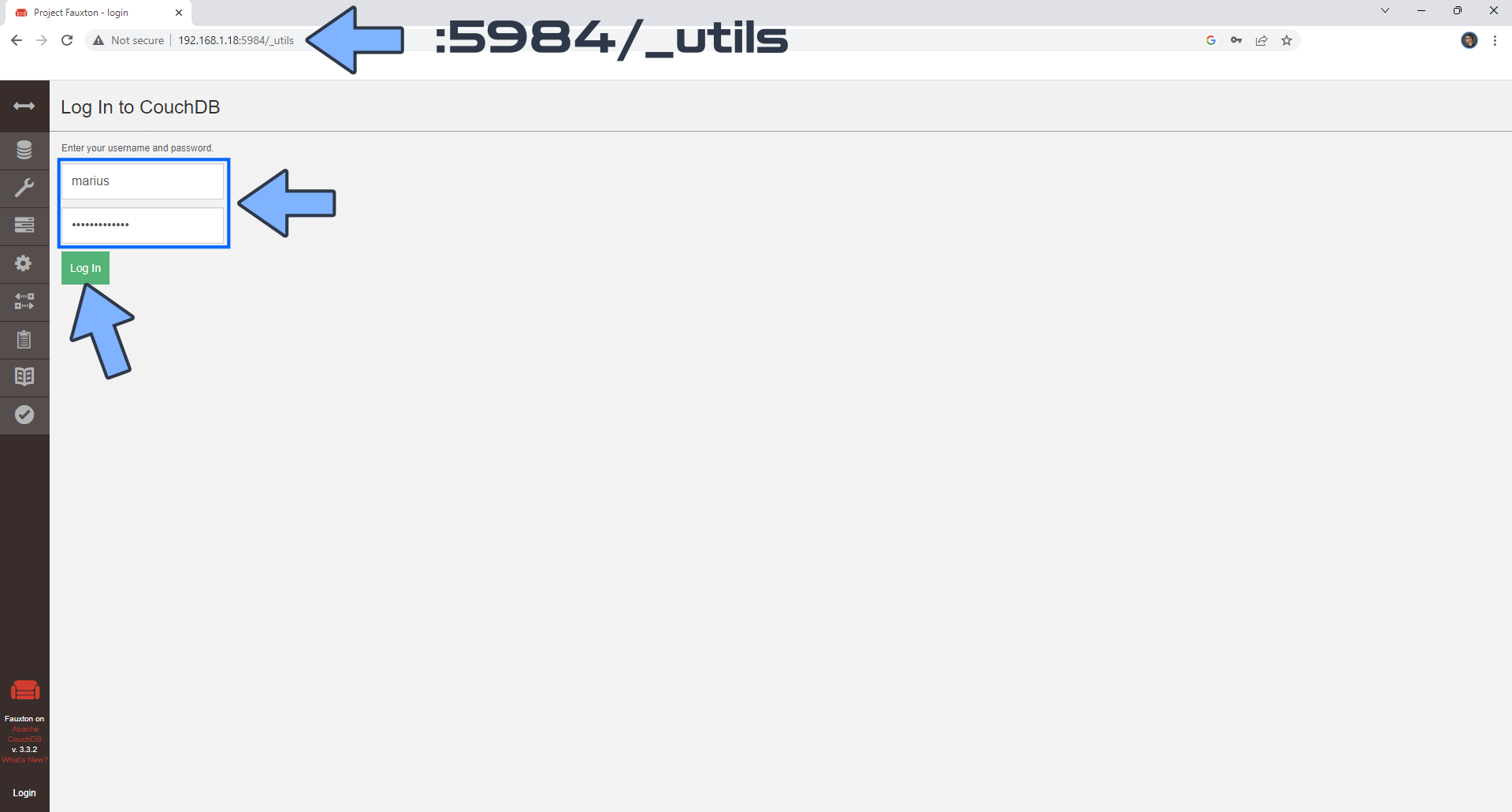
STEP 10
Your CouchDB Admin Dashboard at a glance!
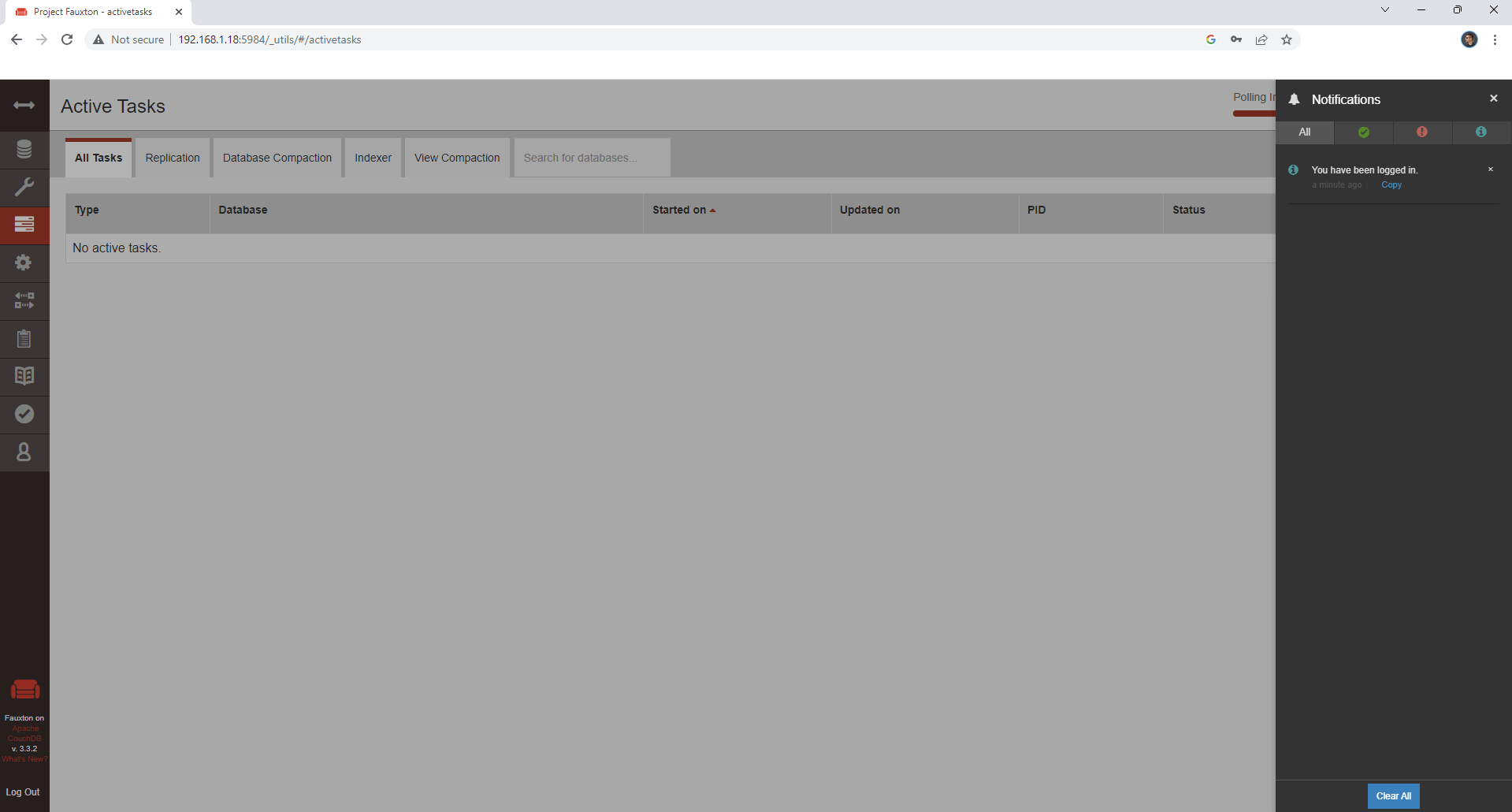
Enjoy CouchDB!
Note: If you want to run the CouchDB container over HTTPS, check How to Run Docker Containers Over HTTPS. In order to make CouchDB work over https, it’s also mandatory to set up WebSocket.
Note: Can I run Docker on my Synology NAS? See the supported models.
Note: How to Back Up Docker Containers on your Synology NAS.
Note: Find out how to update the CouchDB container with the latest image.
Note: How to Free Disk Space on Your NAS if You Run Docker.
Note: How to Schedule Start & Stop For Docker Containers.
Note: How to Activate Email Notifications.
Note: How to Add Access Control Profile on Your NAS.
Note: How to Change Docker Containers Restart Policy.
Note: How to Use Docker Containers With VPN.
Note: Convert Docker Run Into Docker Compose.
Note: How to Clean Docker.
Note: How to Clean Docker Automatically.
Note: Best Practices When Using Docker and DDNS.
Note: Some Docker Containers Need WebSocket.
Note: Find out the Best NAS Models For Docker.
Note: Activate Gmail SMTP For Docker Containers.
This post was updated on Wednesday / August 27th, 2025 at 6:29 PM
